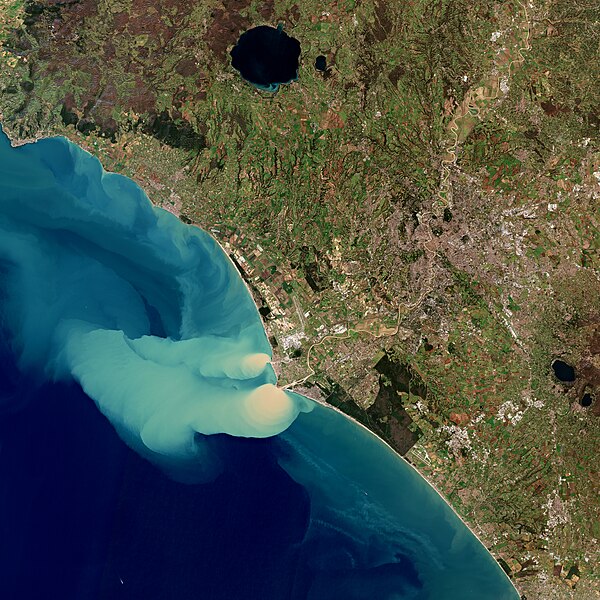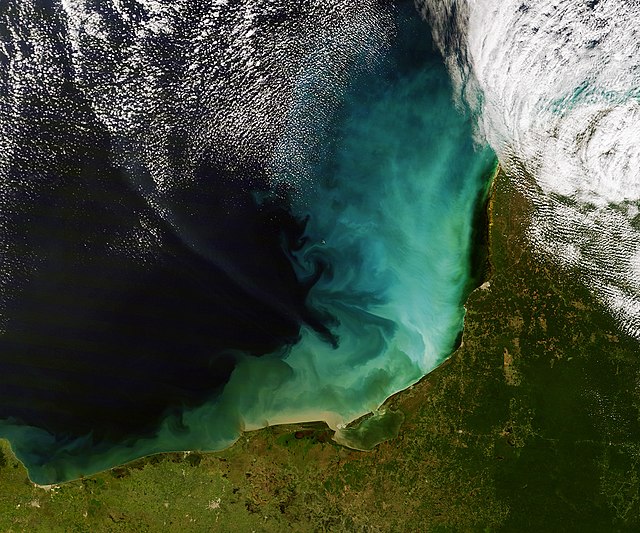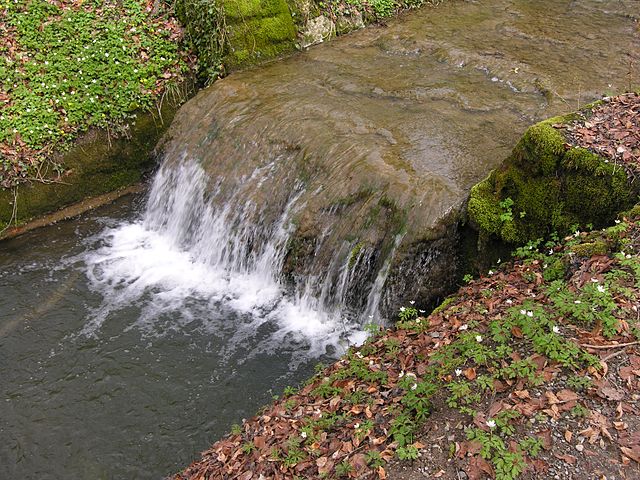Settling is the process by which particulates move towards the bottom of a liquid and form a sediment. Particles that experience a force, either due to gravity or due to centrifugal motion will tend to move in a uniform manner in the direction exerted by that force. For gravity settling, this means that the particles will tend to fall to the bottom of the vessel, forming sludge or slurry at the vessel base.
Settling is an important operation in many applications, such as mining, wastewater and drinking water treatment, biological science, space propellant reignition,
and scooping.
Settling pond for iron particles at water works
Sediment is a naturally occurring material that is broken down by processes of weathering and erosion, and is subsequently transported by the action of wind, water, or ice or by the force of gravity acting on the particles. For example, sand and silt can be carried in suspension in river water and on reaching the sea bed deposited by sedimentation; if buried, they may eventually become sandstone and siltstone through lithification.
River discharging sediment into the ocean
Sediment in the Gulf of Mexico
Sediment off the Yucatán Peninsula
Sediment builds up on human-made breakwaters because they reduce the speed of water flow, so the stream cannot carry as much sediment load.





